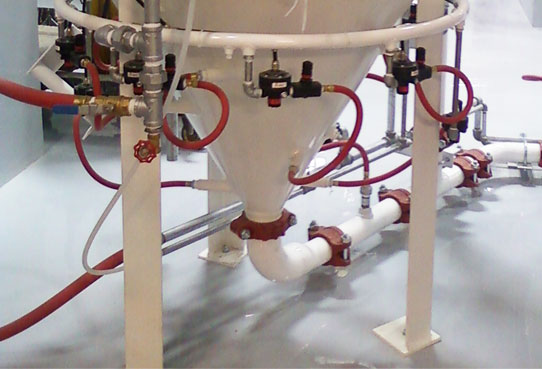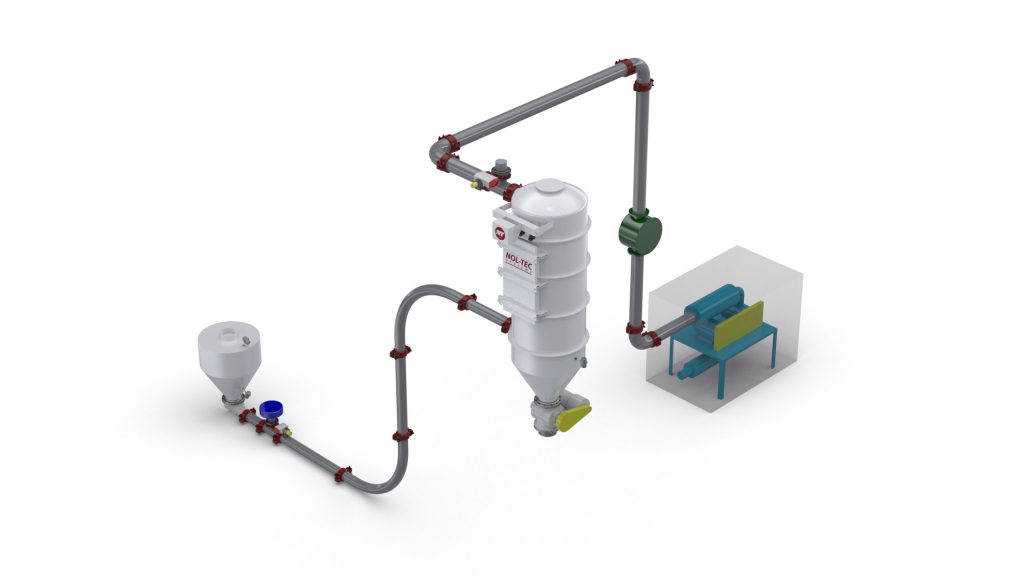Common Differences Between Dense Phase Pressure Conveying and Dense Phase Vacuum Conveying
Dense phase pneumatic conveying is a method for moving difficult, abrasive, mixed batch, or friable materials at a low speed. The materials move along an enclosed pipe, in slug form using small amounts of gas at a low velocity and high pressure. This article introduces the two most common types of dense phase conveying – pressure and vacuum.

Why Choose Pressure Conveying
The system conveys materials at a relatively low speed to reduce material degradation, air consumption, and abrasion on pipeline, bend, and diverter contact surfaces.
Material conveyed by this method is loaded into a pressure vessel. When the vessel is full, compressed air is metered into the vessel. The compressed air extrudes the material from the pressure vessel into the conveying line and to the destination. Once the vessel and conveying line are empty, the compressed air is turned off and the vessel is reloaded. This cycle continues until all of the required materials have been transferred.
To overcome resistance in the conveying line, supplementary air injectors (also called air boosters or Air Assists™) can provide additional air to help maintain conveying velocity, transfer materials over long distances, and minimize line plugging. They can also be used to gently restart flow when materials are left in the line after the conveying cycle.
Fast Facts:
- Dense phase pressure conveying is suitable for gently conveying fragile or abrasive materials (with particles ¾ inch and smaller) over long distances (typically more than 250 feet).
- This system can stop or start with the conveying line full of material.
- An air injector should be used with a high-pressure manifold to prevent back-feeding of material into the compressed air system.
- Commonly handled materials include silica sand, feldspar, fly ash, glass cullet, alumina, glass batch mix, carbon black, sorbitol, dextrose, candies, resins, cocoa beans, hazelnuts, and puffed rice cereal.

Why Choose Vacuum Conveying
This system is typically used to transfer powder and granules at a low rate (25 tph or less) for truck and/or railcar unloading.
This system uses a pressure vessel with a fluidizing bottom so it can handle semi-abrasive powders and fluidizable powders that need aeration to discharge into the conveying line. This method is not the ideal choice for fragile materials or materials containing large and/or variable particle sizes.
Fast Facts:
- Dense phase vacuum conveying is ideal for gently conveying semi-abrasive and fluidizable powders short distances (typically 200 feet or less).
- The largest particles handled by this method are approximately ¼ inch.

Key Takeaways
Dense phase pneumatic conveying offers two common system types, pressure and vacuum.
- Dense phase pressure conveying is suitable for conveying fragile or abrasive materials over long distances.
- Dense phase vacuum conveying is suitable for conveying semi-abrasive and fluidizable powders over short distances.
- Dense phase pressure systems typically use air injectors strategically placed along the convey line to inject air enhancing efficiency, lowering overall resistance, decreasing air pressure requirements, and improving material flow.
How can we help?
Maybe you need a new system, an upgrade to an existing system, or a retrofit. Regardless of size, industry, or material, we are here to help you get your project and product moving.
Get in touch